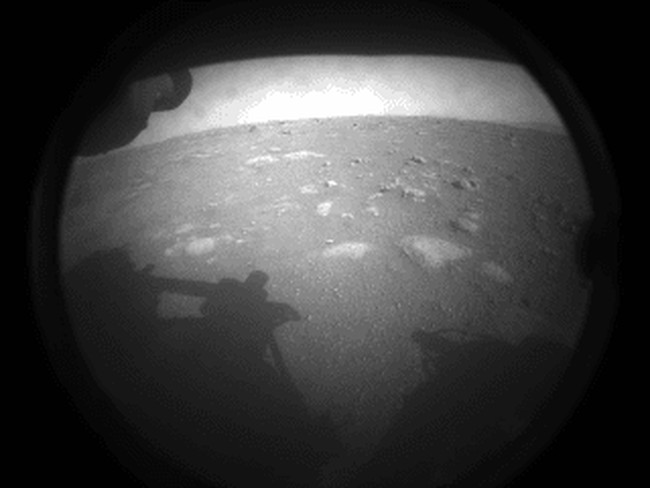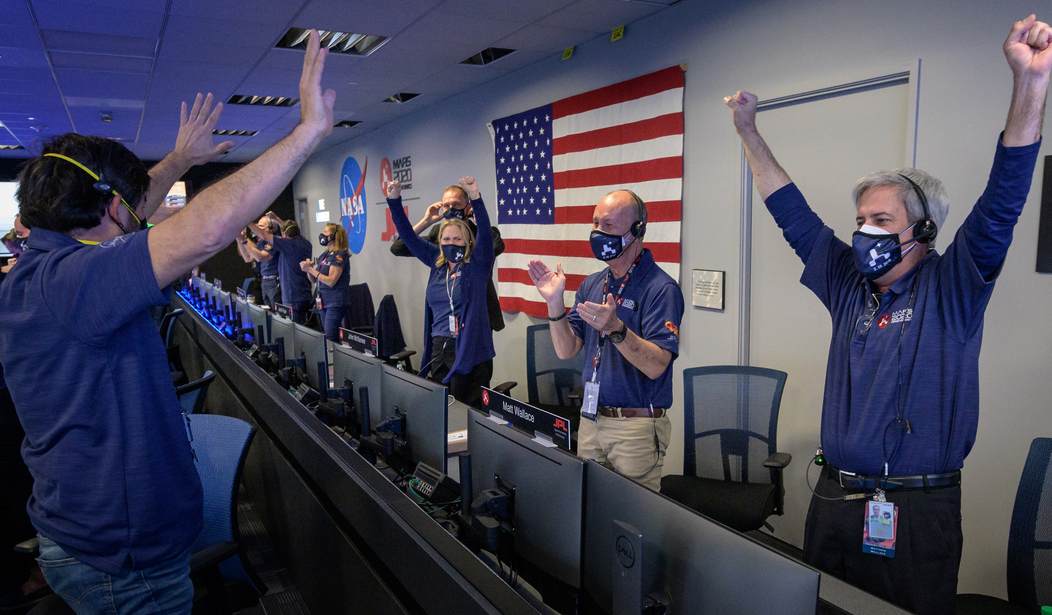NASA’s Perseverance Rover touched down successfully on the surface of Mars yesterday afternoon and beamed back its first images from the red planet.
The pictures were from the engineering cameras on the SUV-sized vehicle, not the primary spacecraft imagers that will be snapping most of the photos on the two-year investigation that scientists hope will discover that life once existed on Mars in the distant past.
Those first pictures reveal a bleak landscape to the untrained eye.

Scientists are thrilled at the prospect of using the breakthrough technology on the rover to answer one of mankind’s oldest questions.
“This landing is one of those pivotal moments for NASA, the United States, and space exploration globally – when we know we are on the cusp of discovery and sharpening our pencils, so to speak, to rewrite the textbooks,” said acting NASA Administrator Steve Jurczyk. “The Mars 2020 Perseverance mission embodies our nation’s spirit of persevering even in the most challenging of situations, inspiring, and advancing science and exploration. The mission itself personifies the human ideal of persevering toward the future and will help us prepare for human exploration of the Red Planet.”
It will be several weeks before all the complex systems on the spacecraft are checked out and the green light is given for the first tentative moves by the rover. The craft will maneuver in and around Jezero Crater — a small feature on the surface that sits on the western edge of Isidis Planitia, a giant impact basin just north of the Martian equator. Scientists believe that the crater harbored a river basin 3.5 billion years ago and after years of study and debate, the Perseverance team determined that Jezero was the best spot to go fossil hunting.
The Perseverance Rover is the most sophisticated spacecraft any nation has ever sent to another planet. Some of the technology is truly amazing.
On the surface of Mars, Perseverance’s science instruments will have an opportunity to scientifically shine. Mastcam-Z is a pair of zoomable science cameras on Perseverance’s remote sensing mast, or head, that creates high-resolution, color 3D panoramas of the Martian landscape. Also located on the mast, the SuperCam uses a pulsed laser to study the chemistry of rocks and sediment and has its own microphone to help scientists better understand the property of the rocks, including their hardness.
There will be a mini-factory deployed by the rover to attempt to use some of the thin Martian atmosphere — made up largely of CO2 — to manufacture oxygen. The process would prove invaluable to future manned missions to the red planet.
Located on a turret at the end of the rover’s robotic arm, the Planetary Instrument for X-ray Lithochemistry (PIXL) and the Scanning Habitable Environments with Raman & Luminescence for Organics & Chemicals (SHERLOC) instruments will work together to collect data on Mars’ geology close-up. PIXL will use an X-ray beam and suite of sensors to delve into a rock’s elemental chemistry. SHERLOC’s ultraviolet laser and spectrometer, along with its Wide Angle Topographic Sensor for Operations and eNgineering (WATSON) imager, will study rock surfaces, mapping out the presence of certain minerals and organic molecules, which are the carbon-based building blocks of life on Earth.
There is a sample return experiment as well. The rover will gather some of the surface material and store it so that a future mission could pick it up and return it to earth.
But far and away the most exciting experiment will be flying the Ingenuity drone. The drone made the trip on the rover’s underbelly and in a couple of months, after all the systems check out, they will attempt to fly it. No one has ever attempted powered, controlled flight on another planet before but the helicopter-like Ingenuity should be able to accomplish it.
Considering that nearly half of all space missions launched toward Mars have been failures, America is on a roll. The last eight missions we’ve sent to Mars have been successful. It’s certainly not because it’s getting any easier. So many elements have to work perfectly for a spacecraft to make it to Mars that it’s far too easy for something to go wrong.
It may be considered lucky but NASA makes its own luck. From the concept board to the landing yesterday was eight years of hard work. No wonder the scientists and engineers in the control room lost their famous reserve and went wild with joy when the news reached them that their creation had taken the first step in completing its mission.










Join the conversation as a VIP Member